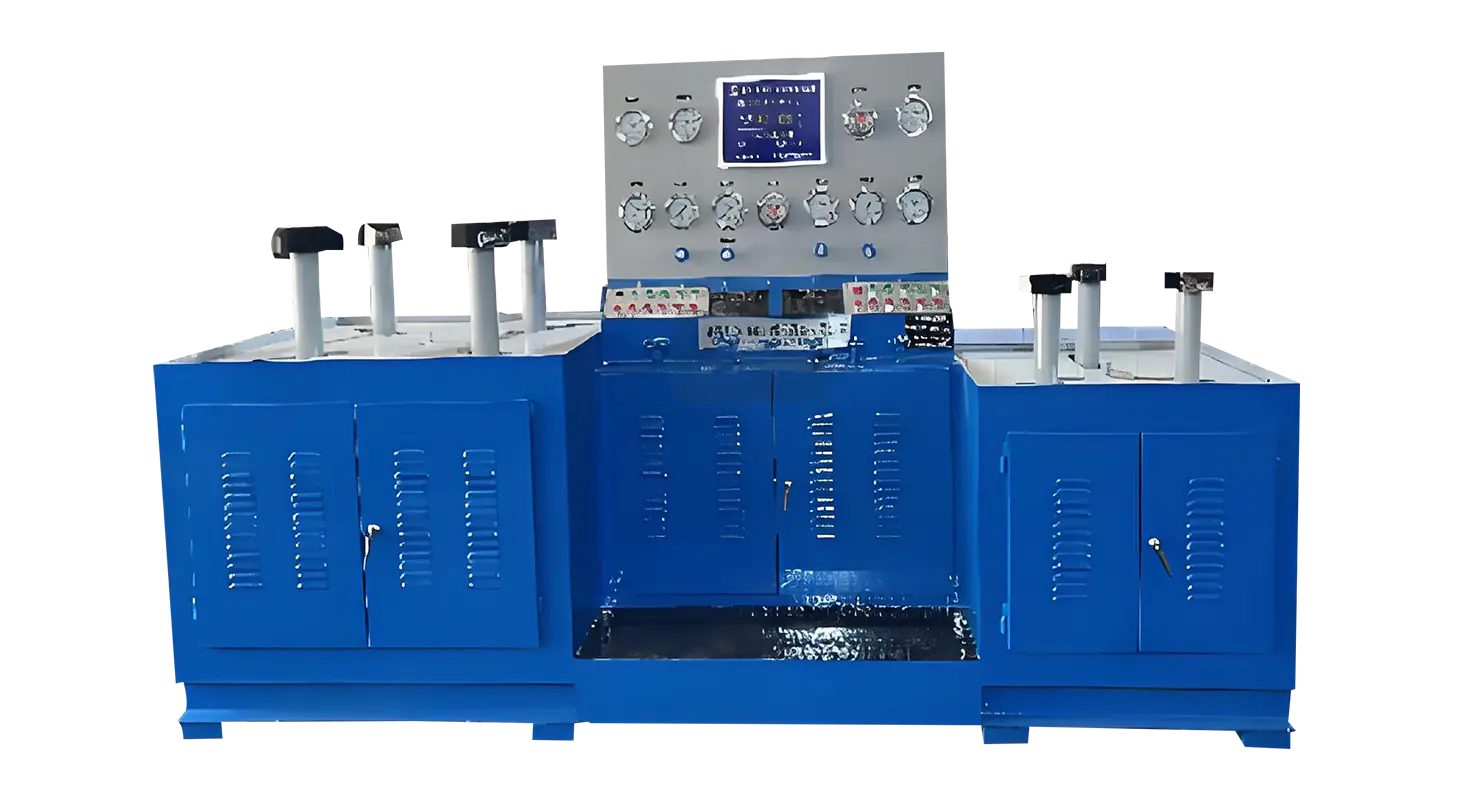Jun 25, 2025
Valve testing is a critical process in ensuring the safety, reliability, and performance of various types of valves used across industries such as oil and gas, water treatment, and manufacturing. Among the equipment used for this purpose, valve test benches are essential for conducting pressure, leak, and functional tests. Two common categories of valve test benches are manual and automatic systems. Understanding the differences between these types can help industries select the appropriate equipment for their specific testing needs.

Manual Valve Test Benches
Manual valve test benches rely primarily on operator intervention to conduct tests. The operator controls various aspects of the testing procedure, such as pressure application, valve positioning, and data recording. These benches often feature straightforward mechanical or hydraulic components that are easy to operate and maintain.
One common type of manual setup is the vertical test bench, which allows valves to be tested in an upright position, closely mimicking their installation orientation. The vertical orientation is especially useful for valves where gravity and flow direction influence the sealing and seat integrity. On a vertical test bench, operators can manually apply pressure, monitor the valve’s response, and inspect for leaks or seat performance.
Manual test benches often incorporate specialized accessories such as a back seat test valve. This valve is used to isolate specific parts of the valve under test, particularly to check the sealing capability of the valve’s back seat area, which prevents leakage when the valve is fully open. Using a back-seat test valve in manual systems requires skilled operation to ensure proper isolation and accurate results.
While manual benches provide flexibility and direct control, they depend heavily on the operator’s experience. Data collection and recording may be done manually or with limited electronic assistance, which can affect test consistency, especially when multiple valves need to be tested under similar conditions.
Automatic Valve Test Benches
Automatic valve test benches are designed to reduce manual intervention by using integrated control systems to manage the testing process. These benches feature programmable logic controllers (PLCs), sensors, and automated pressure regulation to perform tests with small operator input.
Automatic benches can conduct complex test cycles, including pressure ramping, leak detection, and functional verification, while automatically recording results for analysis. This approach increases repeatability and reduces the chance of human error, especially when handling large volumes of valves or conducting standardized testing routines.
Vertical test benches in automatic configurations retain the same orientation benefits but are enhanced by automation technology. Automated systems can control the pressure application, timing, and sequence of tests precisely, providing detailed performance data for valves under varying conditions.
A back-seat test valve is also used in automatic benches to isolate sections of the valve for targeted testing. The automation system can control the actuation of the back seat valve, ensuring consistent positioning and timing during the test. This capability is particularly valuable in functional testing, where the performance of the valve’s internal sealing mechanisms needs to be validated repeatedly.
Comparing Key Features
Operation and Control: Manual benches require hands-on control, making them suitable for low-volume or specialized valve testing where flexibility is necessary. Automatic benches are ideal for high-volume testing or when standardized procedures must be strictly followed.
Data Collection: Automatic test benches offer integrated data acquisition and analysis tools, allowing for real-time monitoring and digital reporting. Manual benches may rely on manual data entry or limited electronic systems, increasing the risk of inconsistencies.
Test Repeatability: Automation improves repeatability by controlling variables precisely, whereas manual operations can introduce variations based on operator skill and attention.
Maintenance and Setup: Manual test benches tend to be simpler in design, pilot to easier maintenance and quicker setup. Automatic benches, with their electronic components and software, require specialized maintenance and occasional updates.
Flexibility: Manual systems can be more easily adapted for different valve types or custom testing procedures, while automatic benches usually require programming or hardware modifications to accommodate different test profiles.
Application of Vertical Test Bench and Back Seat Test Valve
The vertical test bench design is widely used in both manual and automatic configurations due to its practical advantages for certain valve types. Testing valves in the vertical position can better simulate operating conditions, and pilot in more accurate results.
The back seat test valve plays an important role in ensuring valve integrity during testing. By isolating the back seat area it allows testers to verify that valves provide adequate sealing when fully open, preventing potential leaks during actual operation.
Both manual and automatic valve test benches serve essential functions in valve quality assurance. Manual benches offer straightforward operation and flexibility, especially when combined with features like vertical orientation and back seat test valves. Automatic benches provide enhanced control, repeatability, and data management capabilities, which are beneficial for extensive testing programs.
Choosing between manual and automatic valve test benches depends on the volume of testing, precision requirements, and available resources. Integrating appropriate accessories such as vertical test benches and back seat test valves, helps ensure comprehensive evaluation of valve performance across different testing scenarios.